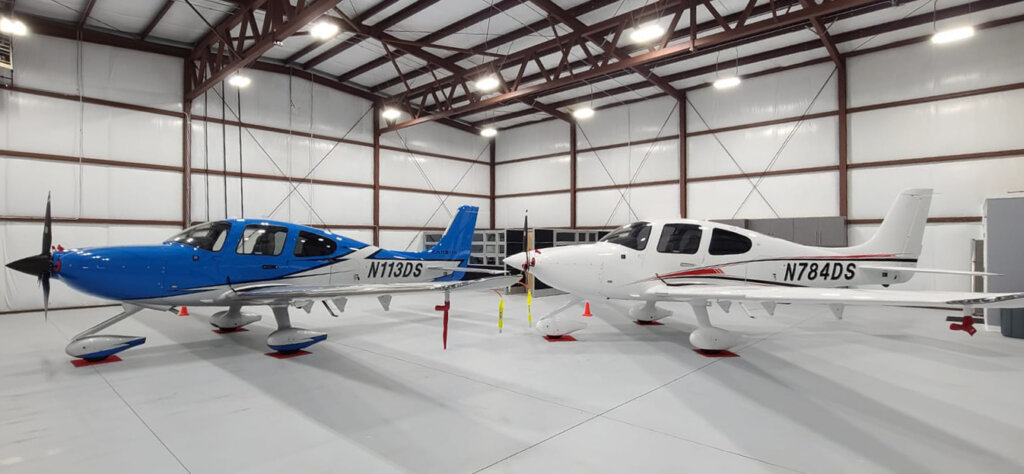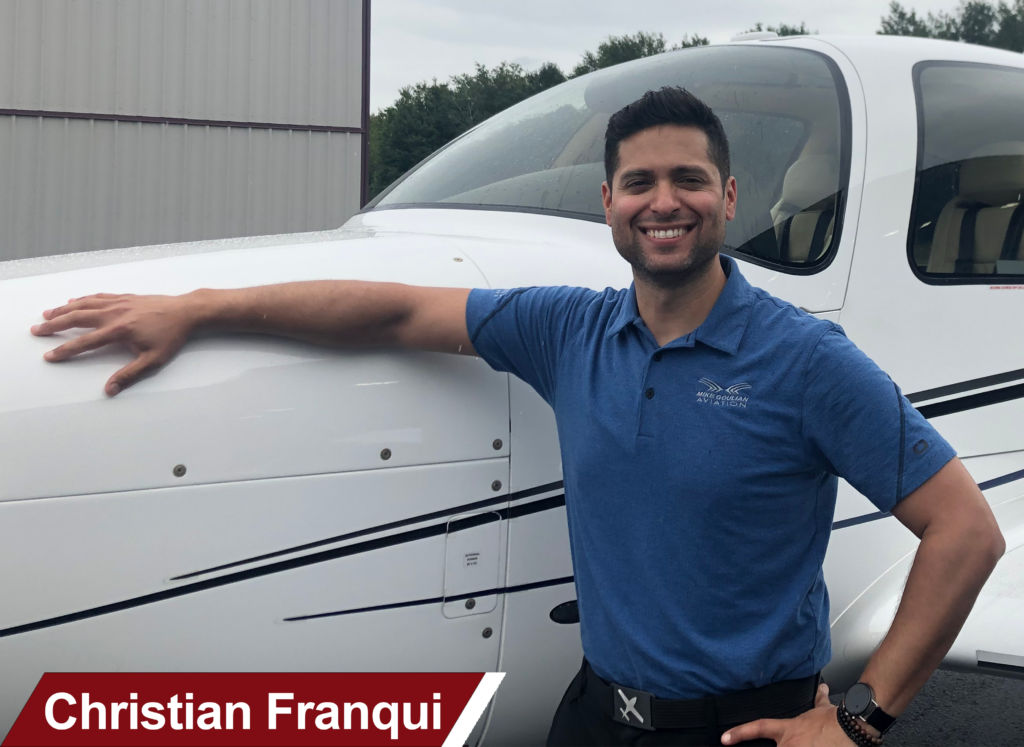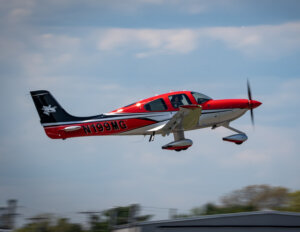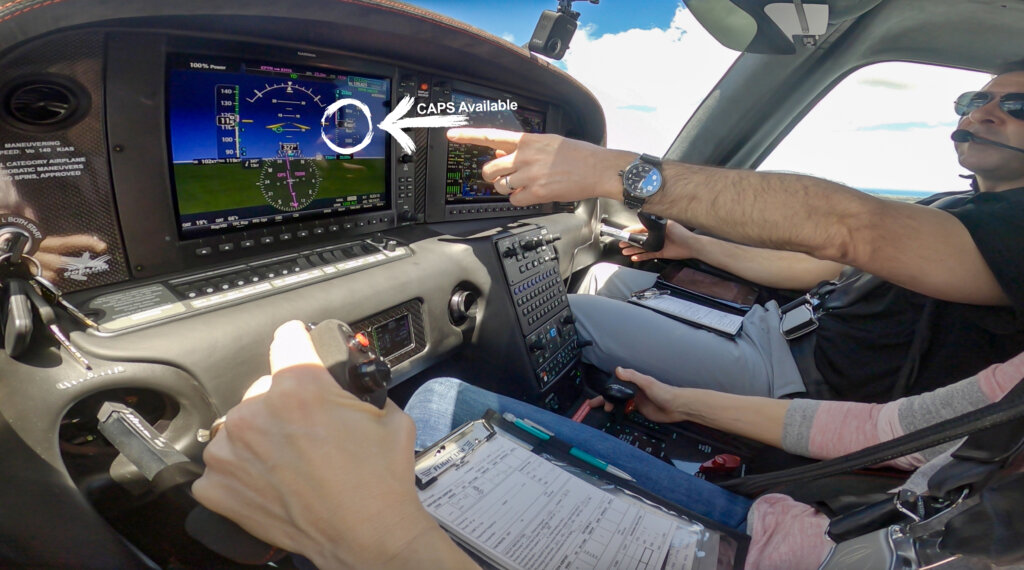August 2021: Laconia, Pro Tip & More

Come fly with us in Laconia, NH!
We are excited to announce that our new location in Laconia, NH (KLCI) has been officially approved by Cirrus as a designated Cirrus Training Center. We’re also happy to announce that we will be sending you more regular updates via our newsletter. The aim for our newsletter is to be informational, educational and inspirational. We look forward to providing you with great content to keep you up-to-date with news from MGAV as well as valuable training tips.
The beautiful Laconia Municipal Airport has a rich historical background and a welcoming future when it comes to aviation. The start of Laconia’s airport dates back to 1923, when local aviation pioneer, Bob Frogg, opened Winnipesaukee Seaplane Service, and was awarded with the first RFD aero marine mail service in the US two years later.
With this seaplane service, an aviation community began to form. In 1941, KLCI was used as an emergency landing field and military training center after its new location was built in Gilford at the height of WWII (previously, it was a grass landing strip in Laconia). This newly constructed airport led to great achievements in the following year. Alma Gallagher Smith was the first person to solo and the first woman in the state of New Hampshire to earn her pilot’s license.
With this rich history, we are happy to continue building the spirit of aviation at Laconia!
We are located at 70 Airport Road, Hangar 5A, Gilford, NH 03249. Give us a call or text at (857) 206-5531 if you have any questions about training in or renting one of our beautiful Generation 6 Cirrus aircraft.

Check out KLCI’s fleet! Our Laconia Cirrus Training Center is now home to one G6 SR22 – N113DS (left) and one G6 SR20 – N784DS (right).
Meet Our KLCI Instructors


We’re so excited to have two amazing pilots/instructors on our team! Their passion for flying excellence makes them an awesome addition to MGAV.
In Focus: Getting to Know Greg Walton
Greg grew up in Maine in an aviation family, so his aspiration to become a pilot formed at a young age. Greg would watch planes fly above with fascination everyday, developing the joy of aviation from his father, a flight officer on the P3 Orion.
Greg played Division 1 soccer at U. of Vermont while earning a degree in Earth and Climate Science. Greg began to pursue his flying dream after college when he move to Arizona to begin his flight training. After completing his training, he began teaching others how to fly. Later, Greg became a pilot for Cirrus Aircraft at their factory in Duluth, MN where he was a flight instructor and corporate pilot for a year. He joined the MGAV team in May 2020.
Greg has a passion for helping clients understand exactly why things happen in the air, and a passion for creating safer and more competent pilots. This deeper level of understanding is crucial for any pilot to be able to exercise their best pilot-in-command decision making. With 1650 hours of flying in various aircraft, he is a great instructor for both new and experienced pilots who are passionate about flying and living the #CirrusLife.
Pro Tip of the Month by Michael Goulian

Have you ever given much thought to what is happening and at what altitudes during the initial climb in a Perspective+ SR2X? Here’s a quick look at what the avionics are doing during this all important segment of your flight.
After taking off and cleaning up your Cirrus by raising the flaps, the first altitude where things happen is 200’ AGL, at this altitude the landing lights switch from being on continuously to a wing wag pattern, the ESP (Electronic Stability Protection) will become active, and in an SR22, the YD (yaw damper) will automatically turn on.
The second critical altitude for an IFR pilot in a Cirrus is 400’ AGL. At 400’ AGL, if you have armed the Flight Director by pressing TOGA on the throttle, and then arming either HDG or NAV for the lateral mode and FLC for the vertical mode, the Flight Director will automatically switch from armed to active in those selected modes at 400’ AGL. In other words, your Flight Director will command a turn to the selected HDG or NAV course and the FLC (Flight Level Change) will capture the IAS that the aircraft was flying when that mode became active. This is a great workload reducer for IFR pilots who might be transitioning from visual to instrument conditions.
The last critical altitude is our CAPS altitude which is 600’ AGL. Most of the Perspective+ aircraft will give a verbal call out at 600’ AGL but it doesn’t hurt to input the MSL CAPS altitude in the minimums window of the PFD.
The automation in a Cirrus is simply amazing but it does take some effort to stay current and proficient with the many safety features of your Cirrus. Please make sure you spend some time studying the different avionics and aircraft systems regularly to keep everything fresh in your mind.
Happy Flying!!

Sincerely,
Michael & Karin Goulian
